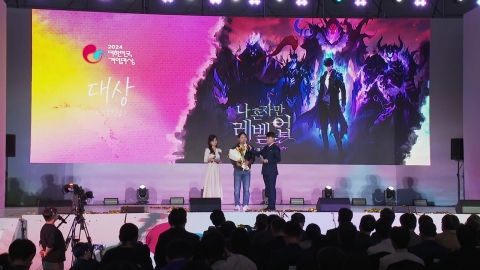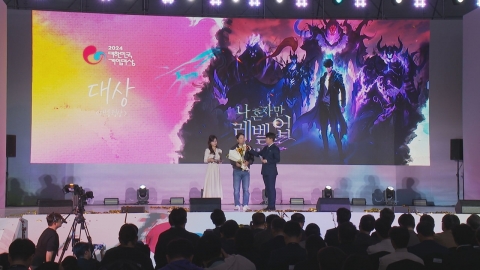Analysts say Russian technology may have been provided to intercontinental ballistic missiles and ICBMs recently test-fired by North Korea.
The South Korean military responded to North Korea's ICBM provocations through joint air exercises between South Korea, the U.S. and Japan, with U.S. strategic bombers deployed.
I'm reporter Lee Jong Won.
[Reporter]
North Korea claimed that the intercontinental ballistic missile, which was test-fired on the 31st of last month, was the final ICBM, calling it the new Hwasong-type 19.
Both range and destructive power were self-rated as 'all-time'.
Compared to the Hwasong-18 type launched in December last year, the warhead is blunt, and analysts say that it showed off its ability to mount multiple warheads by increasing the loading space and weight of warheads.
The diameter and length of the missile are also likely to have increased by using an 11-axis mobile launcher, which is longer than the existing 9-axis.
For this reason, a new engine is needed, and if the launch was successful without additional engine tests, there is a possibility of technical support from Russia.
This is because both the blunt carbon tofu and the first stage propellant look similar to Russia's ICBM.
[Yu Yong-won / People's Power Congressman] The Hwasong-19 is an extended version of the Hwasong-18 type, and I think it may have been supported by Russia because it succeeded in test-firing the new engine without any special tests.]
In the meantime, North Korea and Russia repeatedly showed off their close cooperation by announcing the results of strategic dialogue between their foreign ministers.
The U.S. and its allies have been blamed for the deterioration of the international situation, including the Korean Peninsula, saying they have confirmed that both sides' evaluations of the current international situation are consistent.
In particular, it stated that it reaffirmed its firm commitment to fully implement the provisions of the New Treaty between North Korea and Russia in June, which raised bilateral relations to the level of a military alliance.
[Cho Han-beom / Senior Researcher at the Korea Institute for Unification: We will build a strong common front I think that's what it means. So, there is a possibility that the dispatch of the People's Army will not end here, and not only additional dispatch, but also a large-scale dispatch of manpower....]
In the meantime, amid the participation of the U.S. strategic bomber B-1B, the ROK-U.S.-Japan joint air exercises were conducted over the overlapping of the Korea-Japan air defense identification zone.
It is the fourth time this year that a U.S. strategic bomber has been deployed on the Korean Peninsula, and the second air drill between South Korea, the U.S. and Japan this year.
The Joint Chiefs of Staff stressed that the three countries' response to North Korea's recent ICBM launch was a sign of the ROK-U.S. alliance's comprehensive deterrence and strong commitment to security cooperation between South Korea, the U.S. and Japan.
I'm YTN's Lee Jong Won.
Video editing: Kim Jiyeon
※ 'Your report becomes news'
[Kakao Talk] YTN Search and Add Channel
[Phone] 02-398-8585
[Mail] social@ytn.co.kr
[Copyright holder (c) YTN Unauthorized reproduction, redistribution and use of AI data prohibited]
Politics
More- Ministry of Unification "North Korea doesn't know the inside of the dispatch..."Show us your deceptive attributes".
- Army to provide new homes for two Korean War veterans in Turkey
- [Correct] Myung Tae Gyun and Kim Youngsun, "With Arrest"...Mrs. Kim's new 5 million won detonator?
- President Yoon's 'Appearance of APEC and G20' Departures from South America...The Korea-U.S.-Japan summit, too.
![[Weather] College Scholastic Ability Test, during the day...rain throughout the country in the late afternoon](https://image.ytn.co.kr/general/jpg/2024/1114/202411141326028528_h.jpg)


![[Exclusive] Personal information distributed in "800 Chat Room"...'Illegal Collection' Like a Criminal Organization](https://image.ytn.co.kr/general/jpg/2024/1114/202411140838063004_h.jpg)





